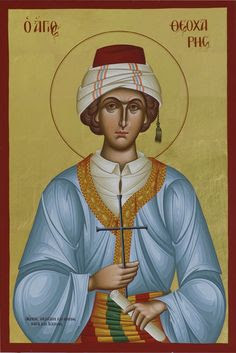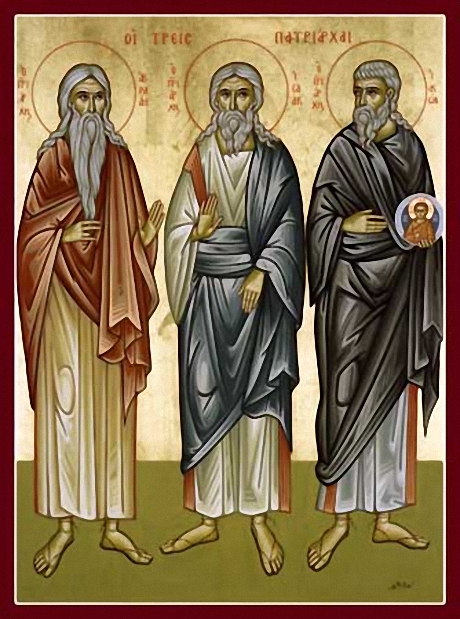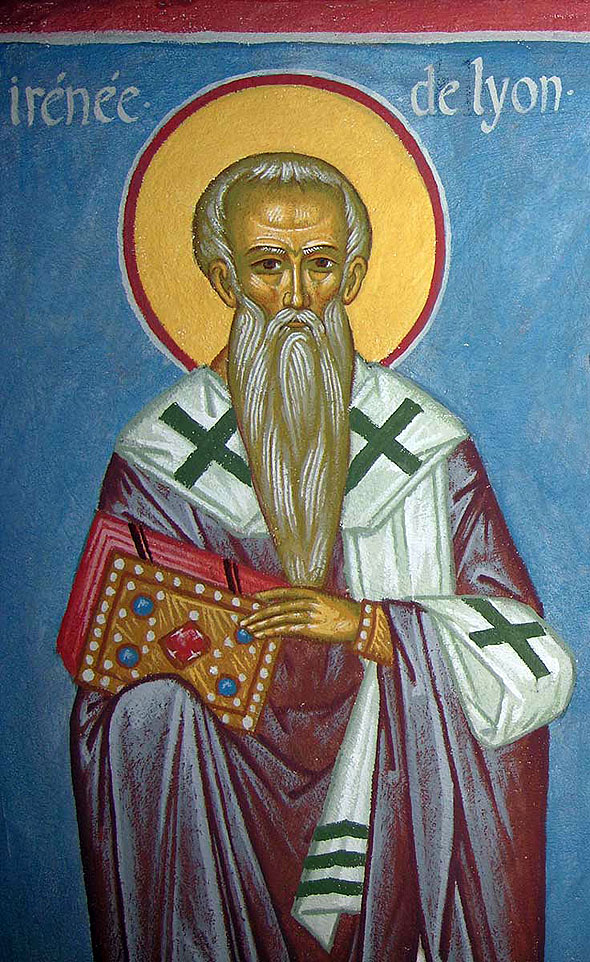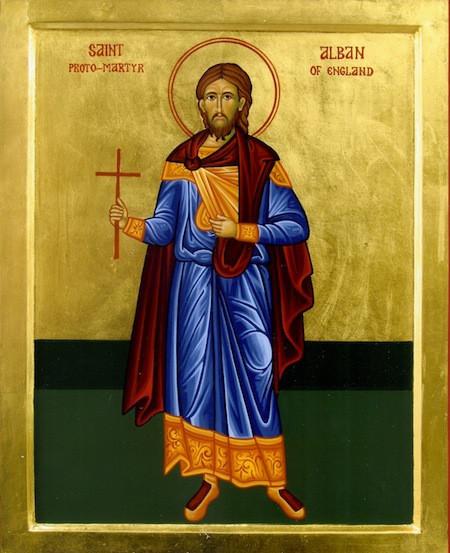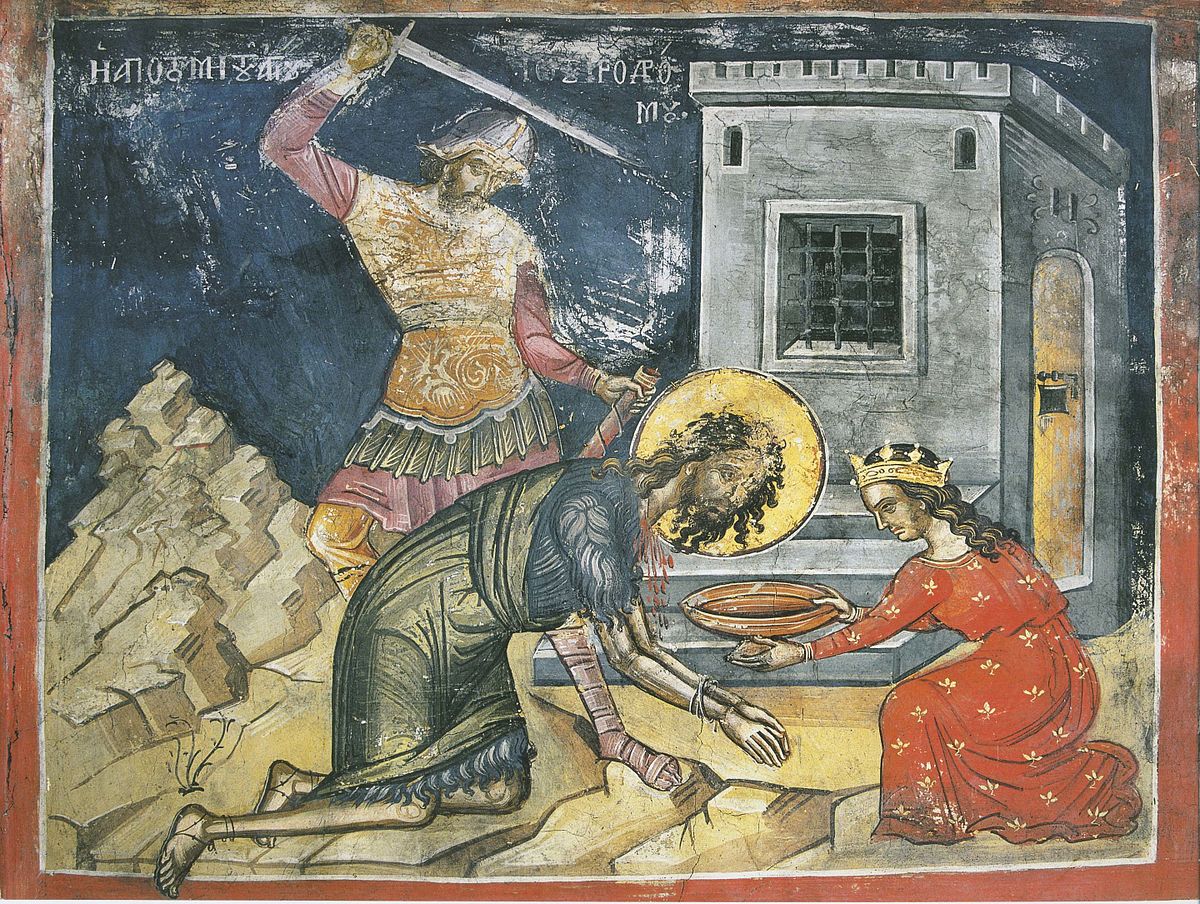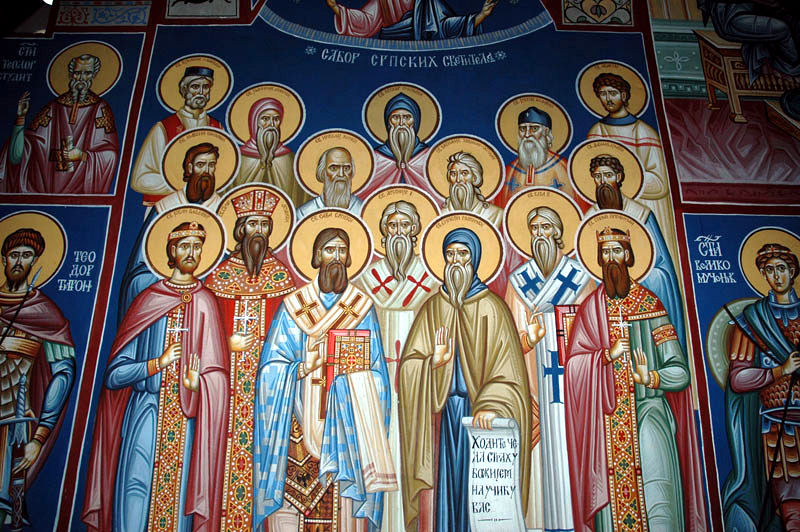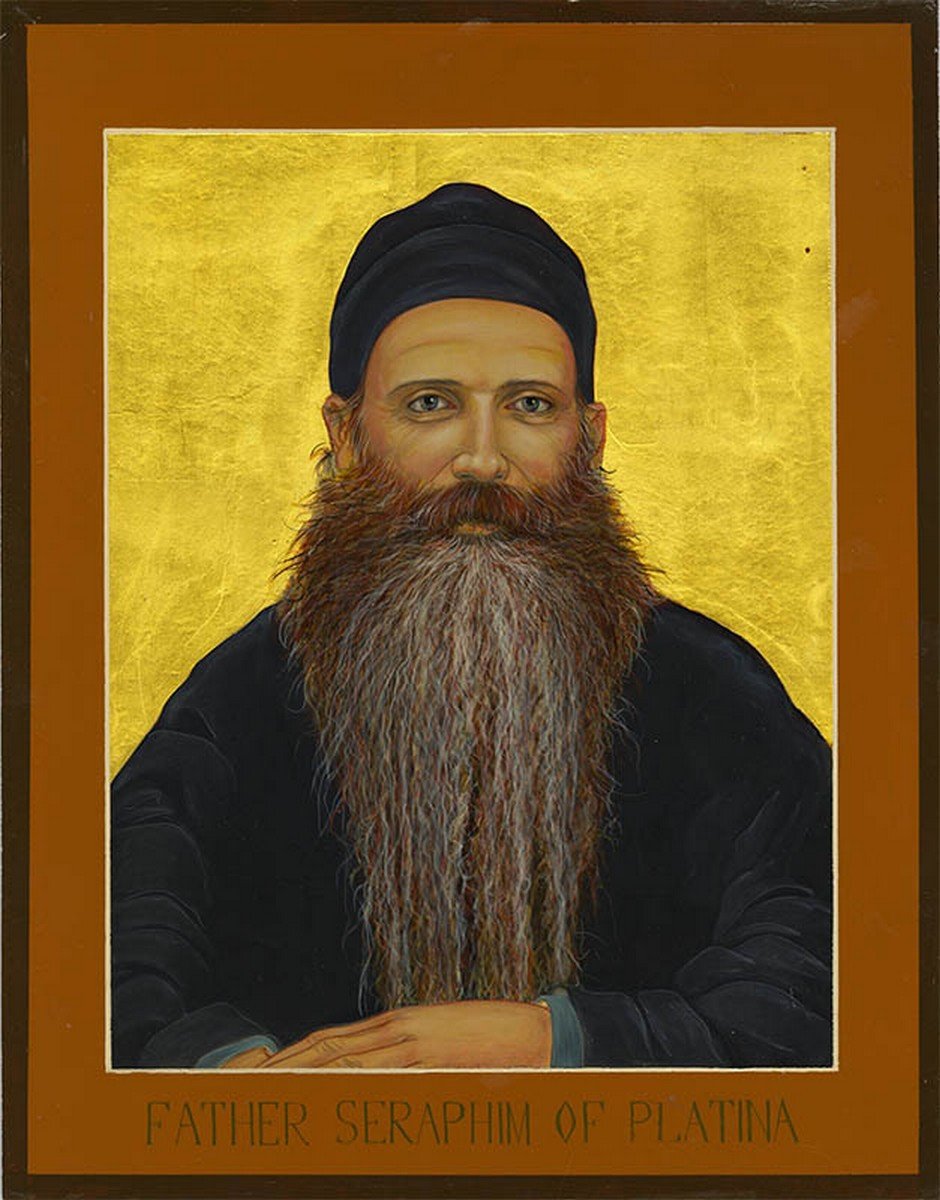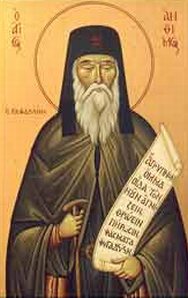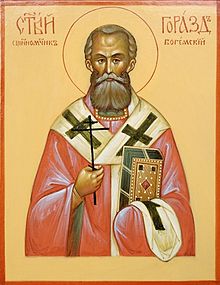- Dec 28, 2017
- 3,779
- 2,856
- Country
- United States
- Faith
- Christian
- Marital Status
- Private
August 19
Lives of the Saints
• Afterfeast of the Dormition of the Mother of God
On the fourth day of the Afterfeast of the Dormition, the Church continues to honor the passage of the Most Holy Theotokos from death to life. Just as Christ once dwelt in the virginal womb of His Mother, now He takes Her “to dwell in His courts.”
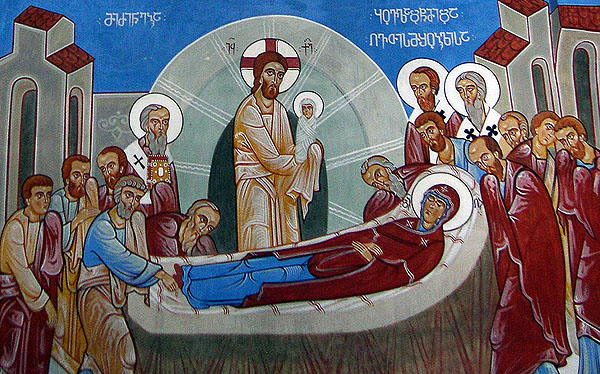
• THE HOLY MARTYR ANDREW, STRATELATES [THE TRIBUNE, THE COMMANDER]
Andrew was an officer, a tribune, in the Roman army during the reign of Emperor Maximian. He was a Syrian by birth, and served in Syria. When the Persians menaced the Roman Empire with their military, Andrew was entrusted to command the imperial army in defense against the enemy. Therefore, Andrew was promoted to the rank of general--"Stratelates." Secretly a Christian, even though he was not baptized, Andrew trusted in the Living God and chose only the best of the many soldiers to enter into battle. Before the battle, he told his soldiers that if they would call upon the help of the one, true God--Christ the Lord--their enemies would scatter as dust before them. Truly, all the soldiers were filled with zeal for Andrew and his faith, and invoked Christ for assistance; then they made the assault. The Persian army was utterly destroyed. When the victorious Andrew returned to Antioch, envious men accused Andrew of being a Christian, and the imperial deputy summoned him to court. Andrew openly confessed his unwavering faith in Christ. After bitterly torturing him, the deputy threw Andrew into prison and wrote to the emperor in Rome. Knowing the respect in which the people and the army held Andrew, the emperor ordered the deputy to free Andrew, and to seek another opportunity and reason to kill him. Through God's revelation, Andrew learned of the emperor's command, and, taking with him his faithful soldiers, 2,593 in number, he departed to Tarsus in Cilicia, where all were baptized by Bishop Peter. Persecuted even there by the imperial authorities, Andrew and his detachment withdrew further into the Armenian Mount Taurus. The Roman army caught up with them there while they were at prayer in a ravine, and all of them were beheaded. None of them tried to defend themselves, but all were desirous of a martyr's death for Christ. On this spot, where the stream of the martyr's blood flowed, a spring of healing water burst forth, which cured many people of every disease. Bishop Peter secretly brought his people and honorably buried the bodies of the martyrs where they had been slain. Dying honorably, they were all crowned with the wreath of glory and took up their habitation in the Kingdom of Christ our Lord.
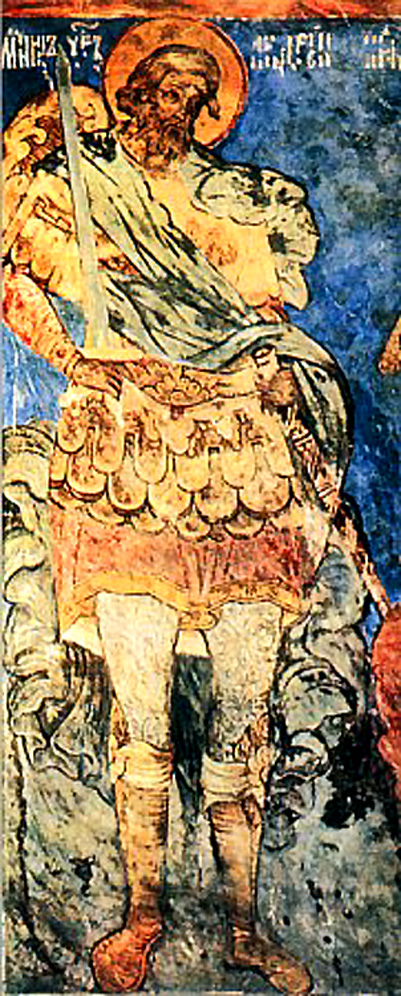
• THE VENERABLE THEOPHANES
Theophanes was born in Ioannia. As a young man, he left all and went to Mt. Athos, where he was tonsured a monk in the community of Dochiariou. He was an example to all the monks in fasting, prayer, all-night vigils, and depriving himself of all that was unnecessary. Because of this, he was eventually elected abbot. Later, because of a disagreement with the monks, he and his nephew left Mt. Athos for Berea [Beroea] in Macedonia, where he established a monastery in honor of the All-holy Theotokos. When this monastery blossomed with spiritual life, Theophanes entrusted its governance to his nephew. He then went to Naousa, where he established another monastery in honor of the Holy Archangels. Theophanes died peacefully in the fifteenth century. His miracle-working relics repose in Naousa, and even now manifest the great power of God.

• THE HOLY MARTYRS TIMOTHY, AGAPIUS AND THECLA
All three were martyred for Christ during the reign of the wicked Emperor Diocletian. Timothy was burned alive, and Agapius and Thecla were thrown to wild beasts.
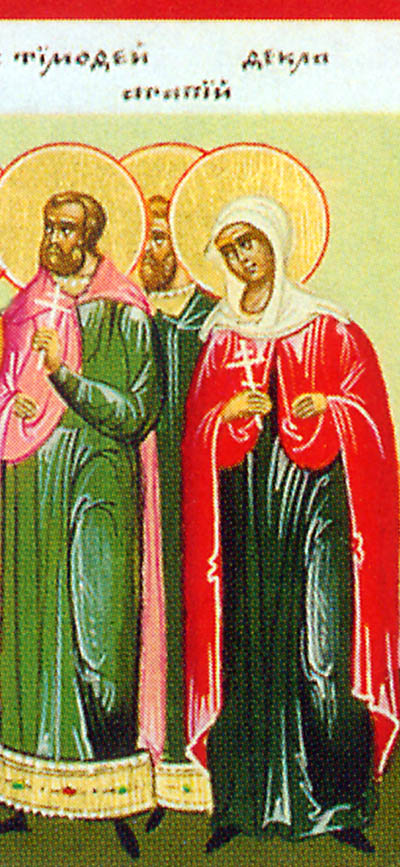
• Martyrs Florus and Laurus of Illyria (2nd c.)
"Brothers in both the flesh and the spirit, they were both zealous Christians, and stonemasons by craft. They lived in Illyria. Some pagan prince set them to build a pagan temple. It happened during the course of their work that a fragment of stone splintered off and flew into the eye of the pagan priest's son, who was watching the building work with curiosity. Seeing his son blinded and bleeding, the priest shouted at Florus and Laurus and tried to thrash them. Then the holy brothers told him that, if he would believe in the God in whom they believed, his son would be restored to health. The priest promised. Florus and Laurus prayed to the one, living Lord with tears and made the sign of the Cross over the child's stricken eye. The child was healed instantly and his eye became whole as it had been before. Then the priest, Merentius, and his son were baptised, and they both very soon suffered for Christ in the flames. But Florus and Laurus, when they had finished the temple, put a Cross on it, called together all the Christians, and consecrated it in the name of the Lord Jesus with an all-night vigil of hymns. Hearing of this, the governor of Illyria burned many of these Christians by fire and had Florus and Laurus thrown alive into a well, which was then filled with earth. Their relics were later discovered and taken to Constantinople. These two wonderful brothers suffered for Christ, and were glorified by Him, in the second century." (Prologue)
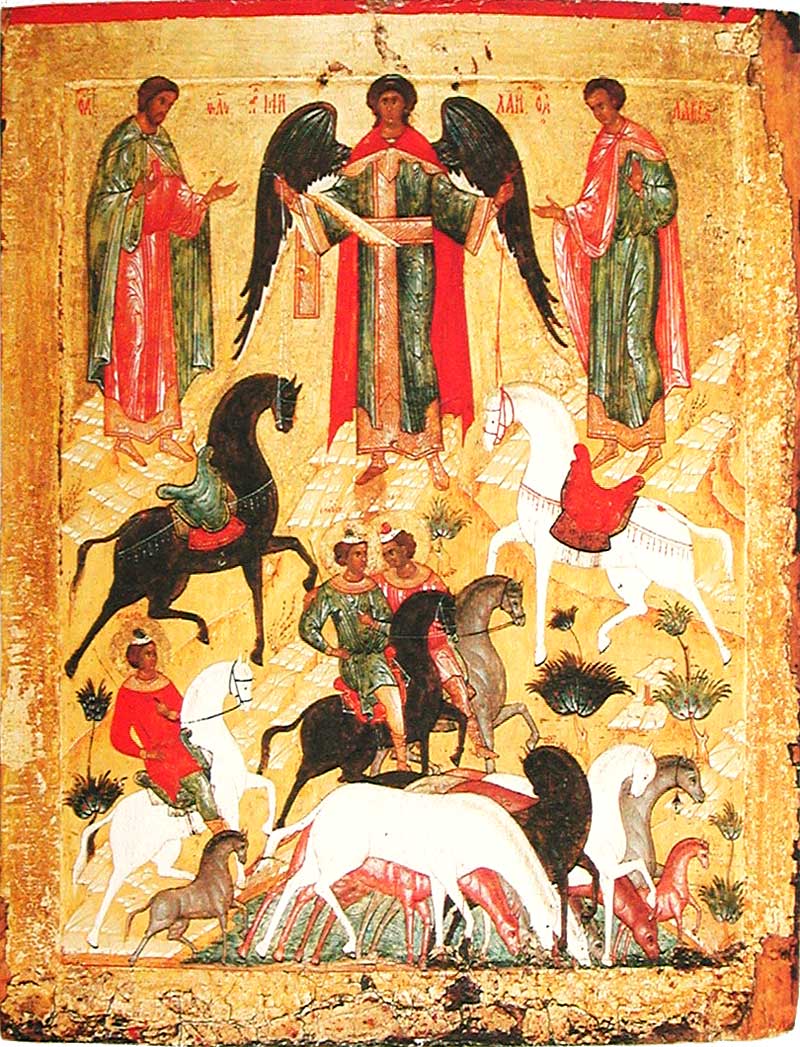
• Our Holy Father John, Abbot of Rila (946 A.D.)
He was born near Sophia in Bulgaria during the reign of the Emperor Boris. When his parents died he withdrew from the world to a cave high in the mountains, where he gave himself to the ascetical struggle. There the Prologue says that he 'endured many assaults both by demons and men, from robbers and from his kinsmen.' In time he moved to the mountain of Rila, where he lived in a hollow tree, eating only the wild herbs and fruits there. On Rila he saw no human being for many years, but was eventually discovered by a shepherd, after which his fame spread quickly: many came to him for counsel and for the healing of diseases, and Peter, King of Bulgaria, visited him for advice. Many people seeking their salvation settled near him, and soon a church and monastery developed around him. St John reposed in 946 and appeared to his disciples after his death. His relics are venerated at the monastery of Rila, which has for centuries been a lighthouse of Orthodox spirituality in Bulgaria.
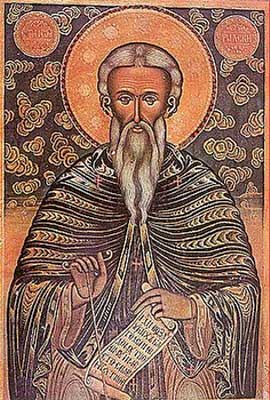
• Saint Pitirim, Bishop of Perm
Saint Pitirim, Bishop of Perm
• Intercession of the “Don” Icon of the Mother of God against the Tatars Attack
Intercession of the “Don” Icon of the Mother of God against the Tatars Attack
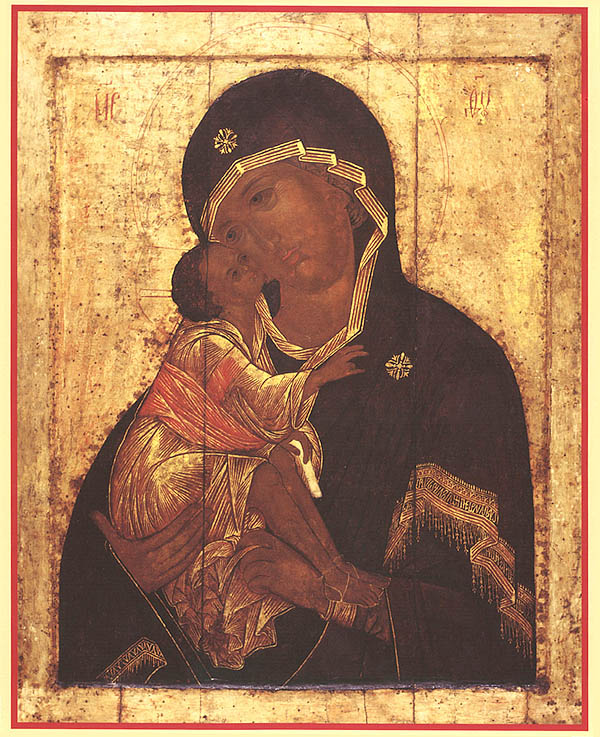
.
Lives of the Saints
• Afterfeast of the Dormition of the Mother of God
On the fourth day of the Afterfeast of the Dormition, the Church continues to honor the passage of the Most Holy Theotokos from death to life. Just as Christ once dwelt in the virginal womb of His Mother, now He takes Her “to dwell in His courts.”
• THE HOLY MARTYR ANDREW, STRATELATES [THE TRIBUNE, THE COMMANDER]
Andrew was an officer, a tribune, in the Roman army during the reign of Emperor Maximian. He was a Syrian by birth, and served in Syria. When the Persians menaced the Roman Empire with their military, Andrew was entrusted to command the imperial army in defense against the enemy. Therefore, Andrew was promoted to the rank of general--"Stratelates." Secretly a Christian, even though he was not baptized, Andrew trusted in the Living God and chose only the best of the many soldiers to enter into battle. Before the battle, he told his soldiers that if they would call upon the help of the one, true God--Christ the Lord--their enemies would scatter as dust before them. Truly, all the soldiers were filled with zeal for Andrew and his faith, and invoked Christ for assistance; then they made the assault. The Persian army was utterly destroyed. When the victorious Andrew returned to Antioch, envious men accused Andrew of being a Christian, and the imperial deputy summoned him to court. Andrew openly confessed his unwavering faith in Christ. After bitterly torturing him, the deputy threw Andrew into prison and wrote to the emperor in Rome. Knowing the respect in which the people and the army held Andrew, the emperor ordered the deputy to free Andrew, and to seek another opportunity and reason to kill him. Through God's revelation, Andrew learned of the emperor's command, and, taking with him his faithful soldiers, 2,593 in number, he departed to Tarsus in Cilicia, where all were baptized by Bishop Peter. Persecuted even there by the imperial authorities, Andrew and his detachment withdrew further into the Armenian Mount Taurus. The Roman army caught up with them there while they were at prayer in a ravine, and all of them were beheaded. None of them tried to defend themselves, but all were desirous of a martyr's death for Christ. On this spot, where the stream of the martyr's blood flowed, a spring of healing water burst forth, which cured many people of every disease. Bishop Peter secretly brought his people and honorably buried the bodies of the martyrs where they had been slain. Dying honorably, they were all crowned with the wreath of glory and took up their habitation in the Kingdom of Christ our Lord.
• THE VENERABLE THEOPHANES
Theophanes was born in Ioannia. As a young man, he left all and went to Mt. Athos, where he was tonsured a monk in the community of Dochiariou. He was an example to all the monks in fasting, prayer, all-night vigils, and depriving himself of all that was unnecessary. Because of this, he was eventually elected abbot. Later, because of a disagreement with the monks, he and his nephew left Mt. Athos for Berea [Beroea] in Macedonia, where he established a monastery in honor of the All-holy Theotokos. When this monastery blossomed with spiritual life, Theophanes entrusted its governance to his nephew. He then went to Naousa, where he established another monastery in honor of the Holy Archangels. Theophanes died peacefully in the fifteenth century. His miracle-working relics repose in Naousa, and even now manifest the great power of God.
• THE HOLY MARTYRS TIMOTHY, AGAPIUS AND THECLA
All three were martyred for Christ during the reign of the wicked Emperor Diocletian. Timothy was burned alive, and Agapius and Thecla were thrown to wild beasts.
• Martyrs Florus and Laurus of Illyria (2nd c.)
"Brothers in both the flesh and the spirit, they were both zealous Christians, and stonemasons by craft. They lived in Illyria. Some pagan prince set them to build a pagan temple. It happened during the course of their work that a fragment of stone splintered off and flew into the eye of the pagan priest's son, who was watching the building work with curiosity. Seeing his son blinded and bleeding, the priest shouted at Florus and Laurus and tried to thrash them. Then the holy brothers told him that, if he would believe in the God in whom they believed, his son would be restored to health. The priest promised. Florus and Laurus prayed to the one, living Lord with tears and made the sign of the Cross over the child's stricken eye. The child was healed instantly and his eye became whole as it had been before. Then the priest, Merentius, and his son were baptised, and they both very soon suffered for Christ in the flames. But Florus and Laurus, when they had finished the temple, put a Cross on it, called together all the Christians, and consecrated it in the name of the Lord Jesus with an all-night vigil of hymns. Hearing of this, the governor of Illyria burned many of these Christians by fire and had Florus and Laurus thrown alive into a well, which was then filled with earth. Their relics were later discovered and taken to Constantinople. These two wonderful brothers suffered for Christ, and were glorified by Him, in the second century." (Prologue)

• Our Holy Father John, Abbot of Rila (946 A.D.)
He was born near Sophia in Bulgaria during the reign of the Emperor Boris. When his parents died he withdrew from the world to a cave high in the mountains, where he gave himself to the ascetical struggle. There the Prologue says that he 'endured many assaults both by demons and men, from robbers and from his kinsmen.' In time he moved to the mountain of Rila, where he lived in a hollow tree, eating only the wild herbs and fruits there. On Rila he saw no human being for many years, but was eventually discovered by a shepherd, after which his fame spread quickly: many came to him for counsel and for the healing of diseases, and Peter, King of Bulgaria, visited him for advice. Many people seeking their salvation settled near him, and soon a church and monastery developed around him. St John reposed in 946 and appeared to his disciples after his death. His relics are venerated at the monastery of Rila, which has for centuries been a lighthouse of Orthodox spirituality in Bulgaria.

• Saint Pitirim, Bishop of Perm
Saint Pitirim, Bishop of Perm
• Intercession of the “Don” Icon of the Mother of God against the Tatars Attack
Intercession of the “Don” Icon of the Mother of God against the Tatars Attack
.
Last edited:
Upvote
0

